Imagination Challenge Essay Prompts
e220 sinematic bodies
High, Lanzbom, Nericcio, Sneider & Richards, Inc.
We begin with a snapshot of an intellectual theft: the particulars of this sinematic writing prompt borrow ideas from the intellectual imagination of Gore Vidal (and one can easily pilfer ideas from shoddier sources). Vidal, in one of his countless essays, looks into the murky past of that scary word (for students) “essay” and finds another word not usually associated with the term. That word is "attempt." Where all too often one imagines an essay as a finished product, Vidal argues that the emphasis for a writer in confronting the challenge of the essay should be less product and more process, less clear conclusions, than messy, delicious and invigorating questions.
You see, most people think of an essay as a finished product--a dull, lifeless, inert textual body with a static introduction, an "A-B-C" body, and a clear, let's-tie-up-all-the-pieces conclusion. You will not write this kind of essay for our Sinematic Bodies class. That's right, I am asking with no little nostalgia to return to the origins of the essay. Your only task is to make a sincere attempt to produce a set of ordered reflections, a group of carefully arranged tasty words which respond in some way to the novels, films, short critical treatments and lectures you have worked through and will continue to work through in the coming weeks.
Are you writing for Bill Nericcio and his cohort of talented literatiGTAs? In a way, of course you are. But in order to do well on this assignment, you must forget about your peculiar, if affable, intellectual guides. The only people who really count are the readers you write for: the audience for your paper--in short, YOUR READER. Who is she? What is he like? Well, regardless of his or her various genitalic configuration, he and she are a lot like you. When it comes to reading, they are impatient and easily bored. They like specific details; they love direct, succinct quotes woven carefully into the fabric of an essay. If you are going to write about an image, they want to see a reproduction of that image. They hate misspellings and passive verbs. They like tangy language which is fresh and not filled with stupid, tired phrases. Like you, they resent having their time wasted.
Regardless of which prompt grabs your eye, there is a Research component to this exercise--you should consult, cite and interweave material from at least two (2) outside published scholarly sources that relate explicitly to the particular thesis your essay unfolds-- acceptable research materials include: scholarly books and essays in academic journals--cite these sources using the MLA Bibliography stylesheet. Please DO NOT merely quote from a local newspaper or unedited online ‘zine you find through GOOGLE on the Internet. (NOTE: I WOULD PREFER YOU NOT USE ONLINE RESEARCH RESOURCES NOR ENCYCLOPEDIAS; I ACTUALLY WANT YOU TO CAREFULLY AND WITH PLEASURE USE THE LIBRARY—walk through the corridors of books and get lost even!). Some good starting places for published scholarly approaches to the materials in this class are the Modern Language Association Bibliography and the ProQuest Research Library, available online through Love Library: http://infodome.sdsu.edu/research/databases/databases.shtml.**
Please throw yourself into the pleasure of writing this paper! Take chances and don't hold back--the best A+ essays will probably be efforts where the student, that's right YOU, adapts, warps, refracts, and/or re-imagines the questions provided. You should use no less than 5 and no more than 8 pages (double-spaced typed, carefully proofread, with a dynamic, suggestive title) to complete your task. No cover sheet or folder-cover is necessary and late papers will NOT be accepted. The completed essay is due November 19th @12noon in the special box in front of my office, AH4117--no late papers accepted; no emailed papers accepted.
Here
are your prompts--you are welcome to adapt them as you see fit, especially
if it means you producing a work of art that will blow your reader out
of the water with excitement, enthusiasm, and ecstacy.
|
NEW
GTA-GENERATED
|
PROMPTS |
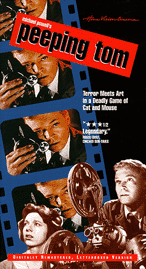 |
Take a literary sightseeing trip. Antonioni, West, Wilder, (maybe Powell) guide us toward their interpretations of the viewer. Stops may include a glimpse through Thomas's camera lens, Tod Hackett's observations of Hollywood, or Joe Gillis's run in with faded stardom. Using three of our guides keen insights into what it means to be a voyeur, take your readers on a tour of the observer. Berger's Ways of Seeing (perhaps Susan Sontag and Laura Mulvey as well) may help as a type of navigator for this trip i.e. I want students to examine how the authors/ directors address the observers in their texts. Maybe even take a turn toward how we then observe those observers. |
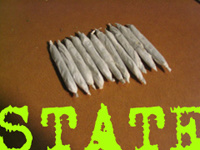 |
Smoke a Doobie for the State: American politicians rant and rave about those bbbbbaaaadddd drugs, yet allow American popular culture to portray Alcohol- and Marijuana=use as attractive and fashionable (see any rap song as an example). Anaylze Brave New World, Hollywood Babylon, and one other work to complicate the state-sponsored drug message. See if these works can elucidate American culture's love/hate relationship with drugs, and the master/slave relationship drug use allows. |
 |
Hegemony and Memory: Smash Brave New World, Ways of Seeing, and one other work together to investigate coercion through non-violent means. How does controlling the information about the past pacify and enslave citizens? What do the authors we have read this semester have to say about information control? |
 |
Constructed in High Heels: In the third essay in Ways of Seeing, Berger says that women, unlike men, construct themselves as both subject and object. Use this theory to analyze two female characters in the works we've read this semester and see if the author's portrayal of their female characters correlates to Berger's theory. |
 |
Which society do you believe offers a better way of living, The World State or the Savage Reservation? Discuss the values you see in both, keep in mind corruption, immorality, religion, decay etc. Bring in CSODA POK and/or other short works in theLOBBY to further elaborate your study. |
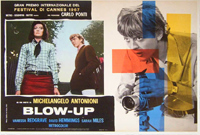 |
Using "hegemony," the predominant influence, of a state, region, or group, over another, as your point of focus, how is director Michelangelo Antonioni's view of the world, which we can't see but is there, not all that different from Aldous Huxley's view of the world in Brave New World. |
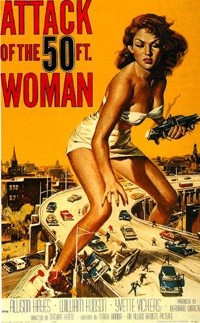 |
Women as "Other" | Explore how women are portrayed as objects of sex and beauty and thus objectified and made into the exotic "other" in Blow-up (or Peeping Tom), Brave New World, and Day of the Locust. How do these authors/directors attempt to make or break this stereotype or vision of women as "other"? |
 |
Crossing Borders/ Transformations | Several of our texts deal with characters who cross social, intellectual, or personal borders or transform themselves and their ways of seeing or representing what they see in a new or different way. Explore the different types of borders/transformations and the causes and effects of crossing/transforming choosing 3 from the following texts: Brave New World, Blow-up, Day of the Locust, Six Women Photographers, or Scene from the Movie Giant. |
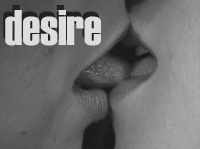 |
Desire plays a role in many of our texts this semester. The desire for fame, fortune, individuality, and sex make up only a few of the controlling ideas thrust upon us. Using two or three (even four!) of the texts, sketch a map of desire. How is desire portrayed? What are the results of the desire? |
| Lanzbom's
Box
of Prompts Choose
ONE
|
In
Aldous Huxley's Brave New World, the World State believes that human
beings are meant to be “used up until they wear out,” like manufactured
goods. Compare this World State belief to the caste system we find
in Sunset Boulevard and Day of the Locust and maybe even
Hollywood
Babylon.
Compare sexual relationships in THREE of the following: Sunset Boulevard,Day of the Locust, Blow-up, Peeping Tom and Brave New World. Talk about similarities and differences. Using Hollywood Babylon, Blow-up, Day of the Locust, Sunset Boulevard and Brave New World, talk about consumerism in our present time compared to what you might find in these books. Using Hollywood Babylon, Blow-up, Day of the Locust, Sunset Boulevard and Csoda Pok, could you argue that people in Brave New World are better off. Are we better off being artificially happy? What about the rise in psychotrophic drug administration and use today? Do you see us heading toward a world on Soma in the future. Argue why the photographers (your choice) in the book, In Real Life: Six Woman Photographers, shows us that the New World State in Brave New World is a farce. |
SINNING
PSYCHES
Contrast
the 'theory' or the 'philosophy' or the 'dynamics' of "sin" and “cinema”
as they unfold in Michael Powell’s Peeping Tom and Nathanael West's Day
of the Locust.
MAD
MEN and a WOMAN
Todd
Hackett, John the Savage, Norma Desmond and Thomas (the photographer in
Blow-Up): what a foursome! Write a psychological 'autospy' on these four
characters. How is their psychology a function of their relationship
with the visual arts—painting, television, film and photography?
Use specific examples NOT DISCUSSED in class to support your findings.
SEXY
BEASTS
Is
human sexuality a practice that relieves psychological pressures or is
the sex act indeed THE act that creates the possibility of psychological
monstrosities. Explore this idea in a comparative analysis of (two
or three of the following): the writing of Aldous Huxley, the cinema of
Michelangelo Antonioni, the playwriting of Oliver Mayer and the graphic
narrative of Art Spiegelman.
MOVIE
MONSTERS
Cinema:
dark, safe wombs of sorts; the first thing most people think of with regard
to the movies? ESCAPE. Yet this semester we will learn that the movies,
far from being a sanctuary, can also function as monstrous prisons, subjecting
their denizens to pain and worse. Explore these notions in a comparative
essay on Tino Villanueva, Denise Chavez and Billy Wilder.
SADISM,
MASOCHISM AND SADO-MASOCHISM
Sexual
pleasure through the administration of pain? Sadism, named after the infamous
Marquis de Sade. Sexual pleasure through the experience of pain?
Masochism, named after the singularly deranged Leopold von Sacher-Masoch.
In the hands of filmmaker Michael Powell and novelist Aldous Huxley however,
we are introduced to studies wherein sadomasochistic characters--odd, disturbing
and compelling fusions of Sade and von Masoch--rule the screen and book
page. John Berger’s Ways of Seeing might come in handy for this essay.
ART
AND THE SELF
Self-referentiality
is the credo of postmodern literature and cinema. Yet different artists
inject autobiographical references into their work for different reasons.
Explore eruptions of the autobiographical in four of the works we have
addressed this term.
ROLL
YOUR OWN ESSAY
Use
any two or three texts we have worked on (films, novels, short stories,
essays, graphic narrative) and develop a critical thesis of your own design.
Please write out a proposal for this thesis and email it to your GTA NO
LATER THAN Friday October 29, 2004
**ProQuest
is good for lazy researchers in that it archives full text versions of
published scholarly articles, saving you the bother of finding out if Love
Library carries the journals cited in the MLA Bibliography--heck, even
some of my articles are indexed on ProQuest. However, there is no substitute,
even in this the high age of cyber fetishization, there is NO substitute
for physically prowling the library stacks for salient critical artifacts.
